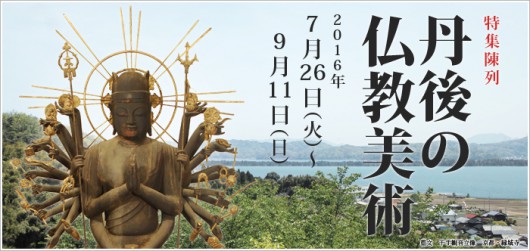Event
Buddhist Art from Tango
Jun 14, 2016 (tue) – Jul 18, 2016 (mon・national holiday)
Hours: 9:30 a.m. – 5:00 p.m. (Entrance until 4:30 p.m.)
Closed: Monday(Tuesday if the Monday is a national holiday)
Admission:
Adult 520 yen
University Student 260 yen
http://www.kyohaku.go.jp/eng/project/2016_tango.html
Venue
Kyoto National Museum
http://www.kyohaku.go.jp/eng/index_top.html
Access: 527 Chaya-cho, Higashiyama-ku, Kyoto, 605-0931, Japan
Tel: 075-541-1151
Hours: 9:30 ~ 18:00/Tuesday ~ Thursday and Weekend
9:30 ~ 20:00/Friday(entry up to 30 minutes before closing.)
Closed: Monday(Tuesday if the Monday is a national holiday)
About
The Tango Peninsula is located on the far northern side of Kyoto prefecture, jutting out into the Japan Sea. As scholars have discovered in recent years, the region, though remote, has a rich Buddhist heritage, housing numerous icons that date from the Heian (794–1185) through Muromachi (1392–1573) periods. This exhibition puts many such works on view, including, for the first time ever, a tenth century hidden Buddhist sculpture of the Thousand Armed Kannon (Avalokiteśvara) from Enjō-ji. This sacred early Heian period image is normally hidden away, even at its temple, making this exhibition an extraordinarily rare opportunity to view it in person.






